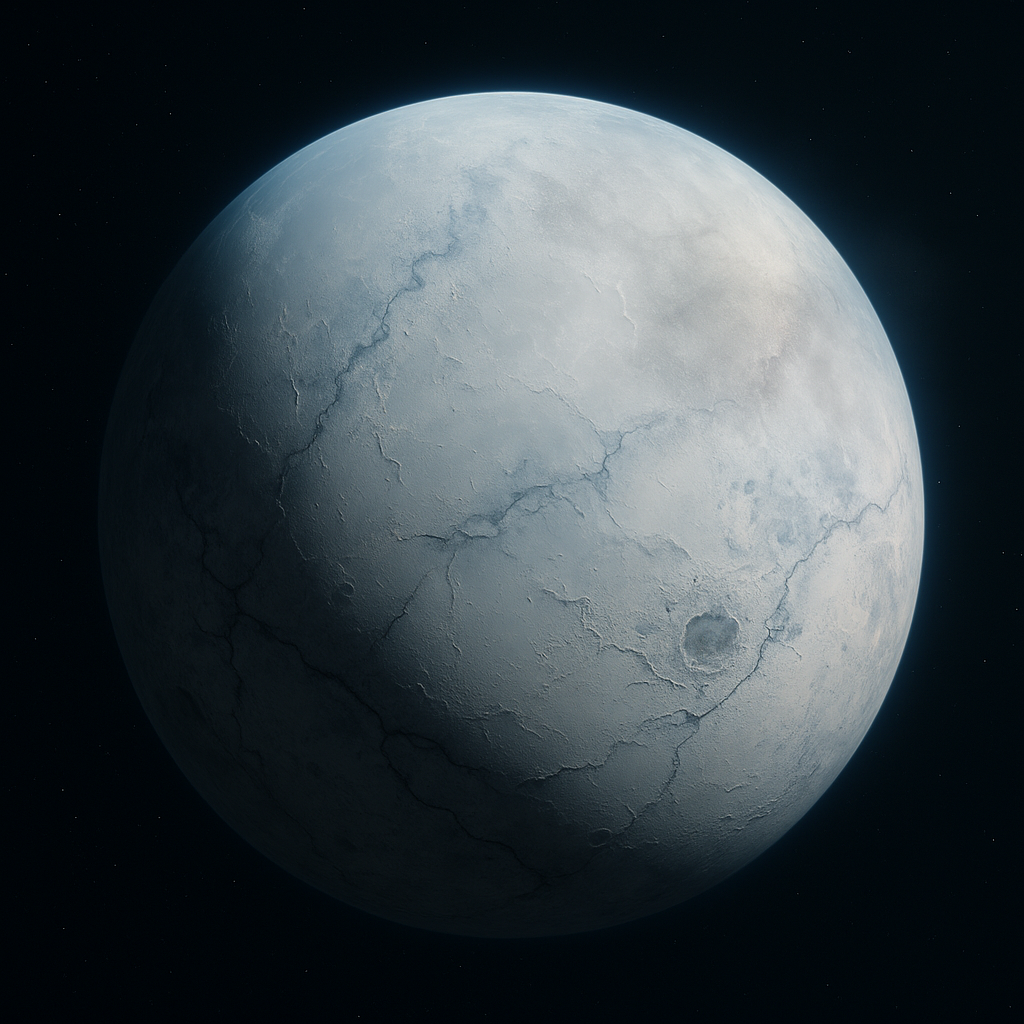Teshuun
Teshuun
Astrographical Information
Galaxy
Milky Way
Galactic ArmOrion
SystemCraehlil System
OrbitingCraehlil
Orbital positionSeventh Planet
Orbital Distance14.12 AU (2,115,464,400 km)
Orbital characteristics
Aphelion 16.43 AU (2,460,236,000 km)
Perihelion 10.97 AU (1,643,229,700 km)
Semi-major axis 14.12 AU (2,115,464,400 km)
Eccentricity 0.244
Orbital period (sidereal) 18,679.4 days
Average orbital speed 3.5 km/s
Mean anomaly 17.4°
Inclination- 2.9° – Craehlil's equator;
- 2.5° – invariable plane;
- 4.3° – J2000 ecliptic
Longitude of ascending node 218.1°
Time of perihelion 9,330.7 days
Argument of perihelion 129.4°
Moon(s) 4
Physical Information
Diameter 9,312 km (5,785.6 mi)
Mean radius 4,656 km (2,892.8 mi)
Equatorial radius 4,662 km (2,896.6 mi)
Polar radius 4,650 km (2,889.0 mi)
Flattening 0.0026
Circumference- 29,273 km; equatorial
- 29,201 km; meridional
- Land: 272,550,000 km² (frozen ices & silicate crust)
- Water: 0 km² (trace clathrate deposits)
Volume 4.22 × 10¹¹ km³
Mass 1.1 × 10²⁴ kg
Mean density 1.43 g/cm³
Surface Gravity 4.2 m/s²
Moment of inertia factor 0.336
Escape velocity 4.8 km/s
Synodic rotation period 33.2 Hours
Sidereal rotation period 32.7 Hours
Equatorial rotation velocity 90.2 m/s
Axial tilt 27.2°
Axial Precession 41,300 years (influenced by orbital eccentricity and cryovolcanic mass shifts)
Albedo- 0.67 geometric
- 0.52 Bond
Temperature 21–74 K
Surface Temperature- -249°C (-416°F) Min
- -213°C (-351°F) Mean
- -133°C (-207°F) Max
Surface absorbed dose rate 0.3 μGy/h
Surface equivalent dose rate 0.5 μSv/h
Apparent magnitude +5.7" to +9.2"
Absolute magnitude (H) 7.81
Atmosphere
Surface pressure
0.021 kPa; ~0.0002 atm (tenuous nitrogen-methane envelope)
Composition by volume- 72.3% Nitrogen
- 19.4% Methane
- 4.2% Ammonia
- 2.6% Carbon monoxide
- 1.0% Argon
- 0.5% Trace volatiles (ethane, hydrogen cyanide, acetylene, seasonal haze)




Comments